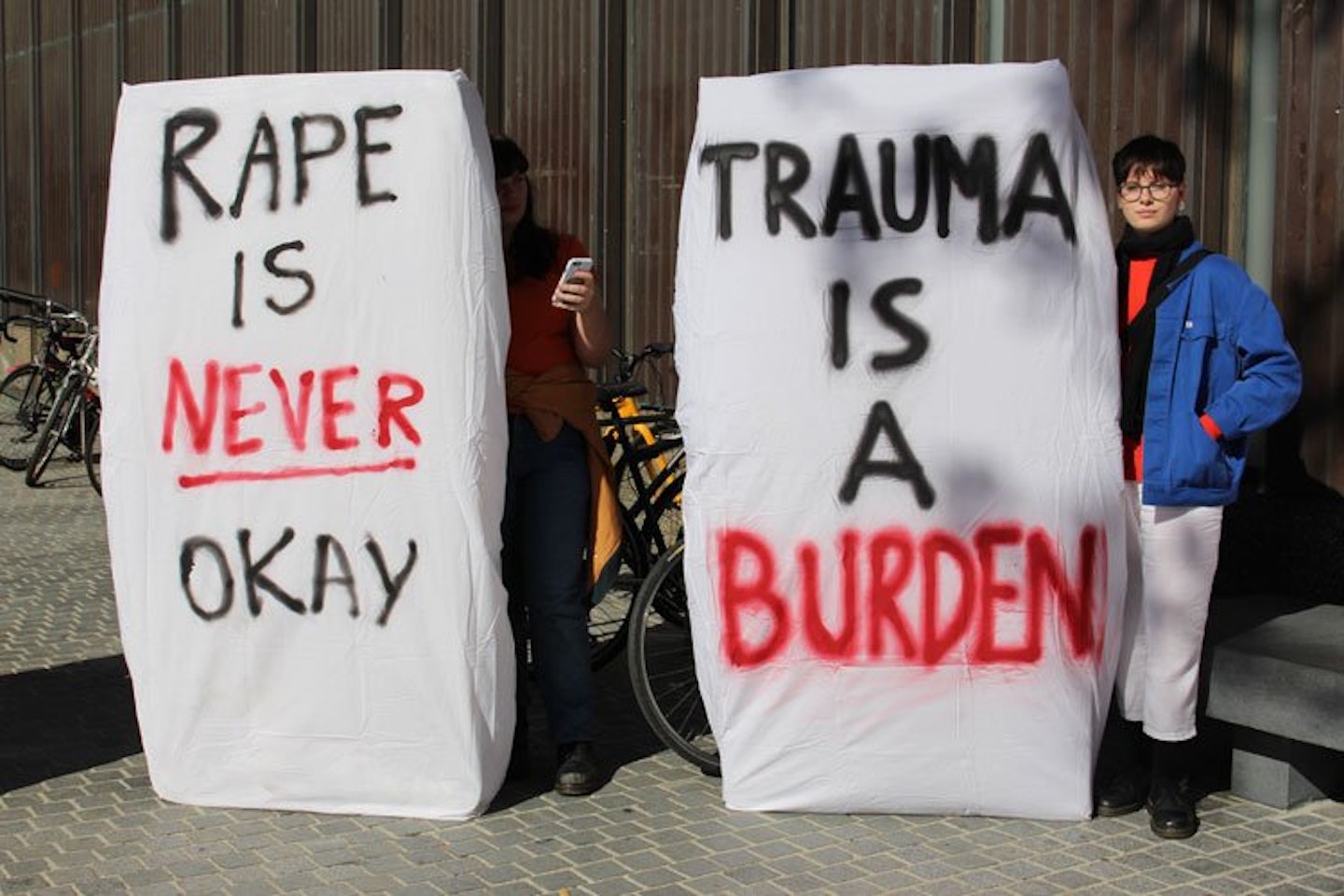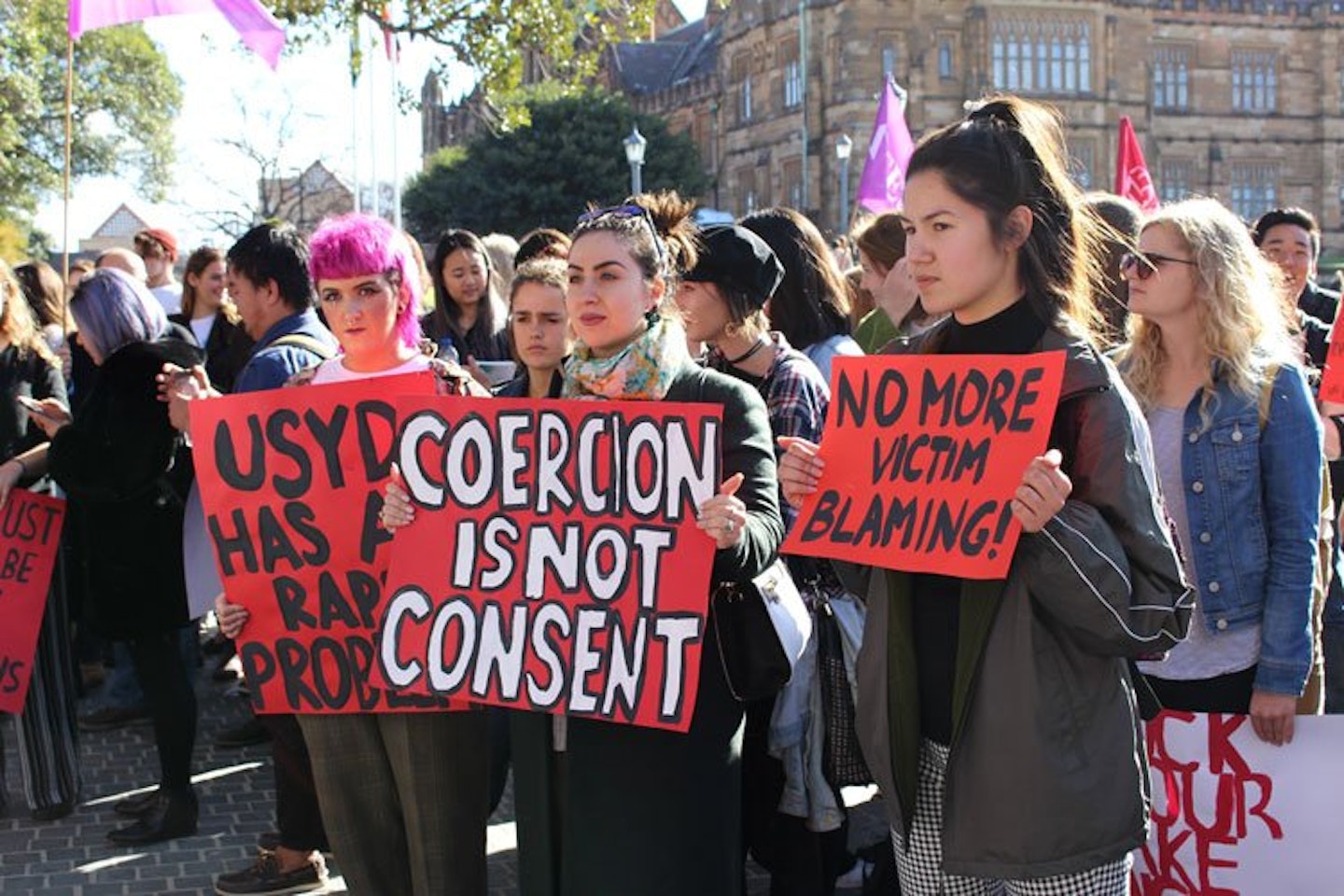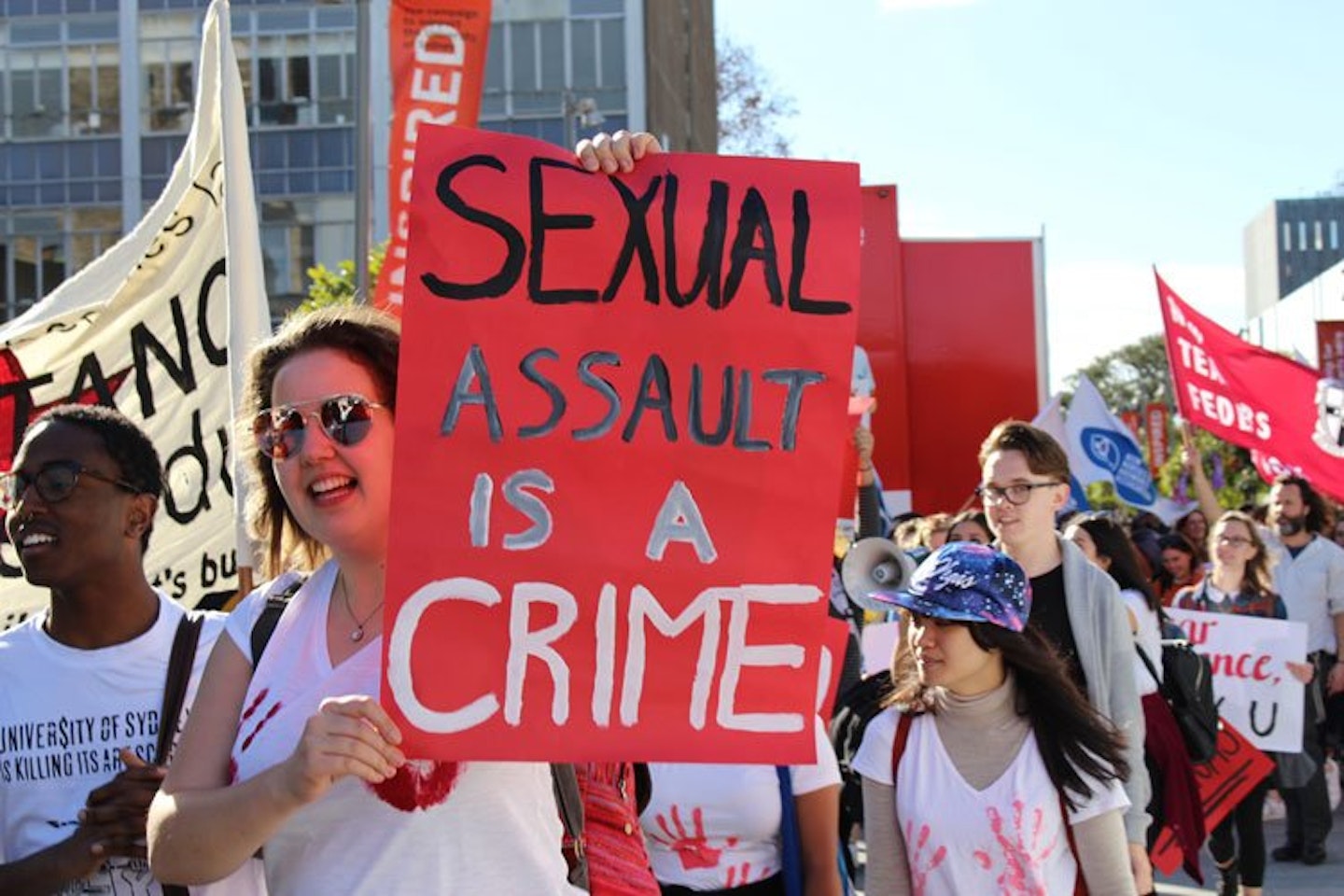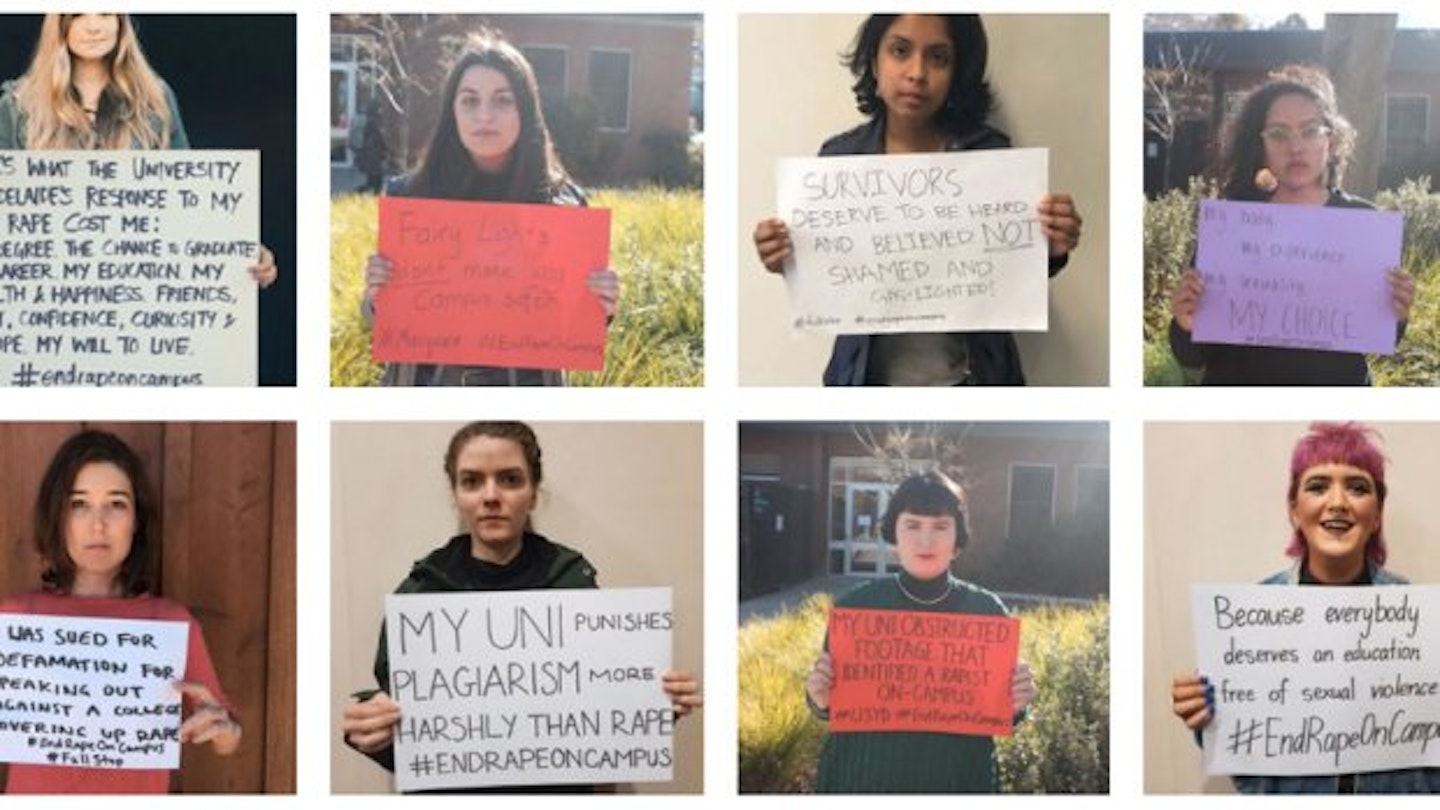Women are being sexually harassed and assaulted on university campuses the world over. It’s a serious, harrowing problem – one that is often belittled at best or willfully ignored at worst by the very people who could help. Institutions are failing to protect their students from an alarming culture of rape, harassment and exploitation in what is meant to be a safe space. Anyone who has survived an attack at University knows how difficult it is to report it because they are often met with inaction, disbelief or negligence in return.
I’ve been following this issue in Australia for years and, for years, nothing changed. Survivors have been treated with hostility and a sinister disregard for the veracity of their experiences.
Then, on the 2nd August, the Australian Human Rights Commission released some statistics that demanded national attention. Their survey reached 300,000 people in 39 Australian universities and the results were damning. Fifty-one per cent of the students who responded to the landmark questionnaire had been sexually harassed at least once in 2016, with one in four of those happening on a university setting. The survey revealed that 6.9 per cent of students had been sexually assaulted, though experts have since said they suspect this number is artificially low due to the design of the survey and the reluctance of survivors to claim assault (a quick note on the difference between sexual harassment and assault: the 1984 Sex Discrimination Act in Australia defines harassment as ‘an unwelcome sexual advance’, ‘an unwelcome request for sexual favors’ or ‘other unwelcome conduct of a sexual nature’ and assault as rape, sexual abuse or undesired touching).
Overwhelmingly, women were the victims of harassment and assault. Overwhelmingly, men were the perpetrators. Forty-five per cent of survivors knew their attacker. Women staying on campus at residential colleges were four times more likely to be assaulted. Transgender and gender diverse students experienced higher rates of sexual assault and harassment as did students with disabilities and students from Aboriginal and Torres Strait Islander background. There is also a pervasive problem with reporting these attacks: 94 per cent of students who were sexually harassed and 87 per cent of students who were sexually assaulted did not make a formal complaint to their university.

Universities have responded with suggestions that they install better lighting on campus and get more CCTV – both flimsy gestures that do little to actually address the stubborn culture of rape and the culpability of some of their male students. The University of Sydney actually blocked police from using CCTV of an attack on a student in a university car park earlier this year, so we know how empty a suggestion it is.
In all this distress, there is finally some hope. The visibility of these stats – and some protests that have followed – put pressure on universities to take real action this time. I learned a long time ago that in cases like this to look out for the survivors, activists and fighters. In my experience, the women at the centre of this fight are courageous, erudite and determined. I’d like to introduce you to a few of the women taking on Australian universities.
Nina Funnell, who I’ve known and admired for a decade now, is an ambassador for the organisation End Rape on Campus Australia. She is also a journalist – she committed to writing 52 articles about sexual assault in universities in a year, one a week, to bring attention to the issue. The day the HRC report was published, she published her 52nd article. She is one of the most tenacious activists in the country and this report has only renewed her ambition. Nina recently fought to raise half a million dollars to launch a hotline providing survivors with trauma-informed counselling (something that is either unavailable, inappropriate or non-existent at universities), which is a vital resource.
‘The report triggered a deluge of survivor disclosure and we needed somewhere appropriate to refer them for help,’ she said. ‘We are working on more for survivors. The Vice Chancellors of all these universities should know that they have nowhere to hide now; they can’t keep obfuscating responsibility or treating this issue like an inconvenience. All Australian universities have a problem with sexual assault. It’s a question of who at least has the courage to be transparent and accountable.’
Nina’s mission to hold universities accountable for the abuse that happens on their grounds is multifaceted: she wants to make the issue so visible it’s impossible to ignore and then she wants universities to provide trauma-informed care, better support for survivors and a better process of reporting. The plight for visibility has recently included a powerful photo campaign. She invited students and former students to make their own signs, either with the details of their experiences, a message to their university or a message to fellow survivors. ‘Because everybody deserves an education free of sexual violence #EndRapeOnCampus,’ read one. ‘My uni punishes plagiarism more harshly than rape,’ read another.
‘It was our way of inviting survivors to share their experience in a controlled environment,’ Nina told me. ‘We’ve met hundreds of survivors – activists and advocates are often survivors themselves – and they are all driven, articulate, intelligent and fierce. We wanted their voices included in this conversation, without exploiting them or making them talk to journalists over and over on the phone from their bedrooms, alone. We invited them to make signs so they got to control what they disclosed. We don’t want the survivors to be forgotten in this or for universities to be able to treat them like numbers in a report. We needed to put a face to these results. It was really cool, and it made universities very nervous.’

Another way to make universities nervous enough to act is to directly appeal to their mercenary agenda. International students bring AU$20 billion into the Australian economy each year, making them the third largest import in the country. The Australian government is actively campaigning to recruit more international students, but very little to actually make them safe when they are there. Nina suggests we take the news of the rate of sexual assault in Australian universities global so that students who might go there know the dangers.
‘We know one of the things that will drive change in this issue: it’s if we can reach the international community,’ she says. ‘International students are a vulnerable group when it comes to sexual assault and we are not protecting them at our universities. Study Abroad students come from places like the UK thinking Australia will be like Home and Away; a paradise. But actually, they are most likely to be sexually assaulted in their first 3 weeks here, when they are still experiencing culture shock. We call it the Red Zone. These students are tens of thousands of kilometres away from their support networks, they don’t know how our legal or medical systems work and a lot of them feel too guilty about the work their families put in to get them here, to go home. Once word gets out that rape happens as much as it does over here, maybe it will make the international student economy nervous and that might get our universities and politicians to take notice and action.’
That’s just how you have to think when you’re trying to get powerful people to protect women and prevent rape. One of Nina’s best allies in this fight is Sharna Bremner, founder of the group End Rape on Campus Australia. Sharna works with students from America and used to spend late nights at home on the phone to the American arm of EROC before she put aside work on her PhD to launch the local branch. She is on the frontline of this battle to get sexual assault taken seriously by universities and she is very clear about what must be done to address the problem.
‘The number one thing that needs to be done is for universities to believe survivors,’ she tells me. ‘Historically, they haven't done that. Some of them still aren't doing that. Universities need to accept - and apologise for - the fact that they have been complicit in harming the survivors within their communities. They need to be able to say the word "perpetrator" and recognise that those perpetrators aren't strangers in a dark alleyway. They're the students in their lecture theatres.’

Sharna knows better than anyone that the scourge of rape on Australian university campuses has been a problem for decades. ‘When I first started doing some research on this stuff, I was horrified to find that the problems students are encountering today were exactly the same as the ones students reported back in the 1960s and 70s. Universities trying to sweep the issue under the rug and protecting perpetrators and their own reputations has been going on for half a century. I'm sure there are some universities who think that because the HRC survey has ended, that this is all over and the attention will just go away. But our work is really just beginning. We're not going anywhere. And the unis need to be prepared for that.’
The day the HRC survey results were released, 400 students marched outside the University of Sydney in solidarity with survivors and to protest the inaction of their university. Imogen Grant, the Women’s Officer at the University of Sydney Union, had a week and a half to organize the protest and she didn’t expect many people turn up, so she was really encouraged.
‘The rally was better than we ever could have imagined,’ she says. ‘We were expecting a showing of maybe 50 people, so I was blown away to see about 400 people all protesting against sexual assault and harassment. We saw students, staff and unionists protesting side-by-side in a united struggle against rape culture and university management. It was so important.’
During her tenure as Women’s Officer, Imogen has made this issue a priority, not least because she has spoken to so many survivors herself. ‘This year I have had so many students disclose their experiences of sexual assault. They’ve told me about how navigating the university bureaucracy exacerbates trauma and often seems futile. Survivors continue to report that they feel discredited, silenced, and their abuse minimized or disbelieved. It’s a systemic failure across the university sector to adequately prevent or respond to disclosures of assault.’
But Imogen, like me, sees hope in the fight: ‘We have now reached an apex in the campaign whereby universities must grasp the issue of sexual assault with the seriousness it has always deserved so as to start the cultural shift to making violence in all its forms unacceptable.’
At last, change is coming.
Photography by Ranuka Tandan/End Rape on Campus Australia
Like This? Then You Might Also Be Interested In:
A Cambridge Student Has Launched A Petition For Sexual Harassment Support At Unis
Why Is The Issue Of Consent At University So Difficult To Grasp?
Meet The Women Leading Exeter Uni's Impressive #NeverOk Campaign Against Sexual Harassment On Campus
Follow Kate on Twitter @kateileaver
This article originally appeared on The Debrief.
